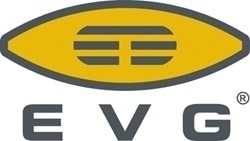Sponsored Content by EV GroupMay 26 2021
Miniaturized biotechnology devices can now be seen in various applications, for example, fields associated with human health as well as industrial and environmental sciences. To effectively market these products in a rapidly growing market with high regulatory barriers and rigorous requirements, cost-effective and accurate micro-structuring technologies are crucial.
Nanoimprint lithography (NIL) is a niche technology that has now become a robust high-volume manufacturing technique that can serve present requirements and resolve the problems of the growing complexity of microfluidic devices in particular, and biotechnology devices in general.
NIL can be differentiated between three kinds of imprint technologies, such as micro-contact printing (µ-CP), UV-NIL, and hot-embossing or thermal NIL. Apart from structuring technologies, sealing is a critical process. Therefore, bonding of various device layers, interconnection layers, or capping layers is a crucial process that can be adopted along with NIL in an efficient large-area batch procedure.
A range of different bonding options is now provided, such as plasma-activated bonding, sophisticated room-temperature bonding methods for bio-material encapsulation, and high-quality hermetic sealing and vacuum encapsulation.
The NIL equipment from EVG provides an ideal solution in which design complexity does not essentially add to the manufacturing cost. Along with bonding processes that are suitably aligned with such structuring methods, restrictions of present fabrication techniques can be resolved to facilitate the production of advanced biotechnology devices.
Bio- and medical devices
.jpg) Image Credit: EV Group
Image Credit: EV Group
DNA, RNA and protein chips
- PCR
- Extraction/purification
- Electrophoresis
- Protein analysis
- Sequencing
Cell and tissue chips*
- Drug discovery
- Organ-on-a-chip
- Cell culture
- Cell sorting
Chemical sensors and biosensors*
- Industrial and environmental analysis
- Clinical chemistry
*-Microfluidic-based
UV lithography
Direct structuring of microfluidics master fabrication for UV-NIL or hot embossing
- Advanced thick and thin resist processing
- Convenient design change for HVM and research and development
- SU-8 mastering
- Multilayer processing for 3D devices
.jpg)
Image Credit: EV Group
UV nanoimprint lithography (UV-NIL)
Nanostructured surfaces with maximum resolution
- Proprietary SmartNIL® technology
- Volume-proven imprinting technology with excellent replication fidelity with down to 20 nm resolution
- Room-temperature process
- Extremely uniform residual layers for improved pattern transfer by etching
- Imprinted UV-NIL resist is well-suited as a functional layer
.jpg)
Image Credit: EV Group
Hot embossing
Replication of microfluidic patterns into polymer material
- Low residual stress
- Simultaneous replication of microstructures and nanostructures
- High aspect ratio features
- High replication precision a low as 50 nm
- Imprinting into spin-on thermoplastics or bulk polymers
.jpg)
Image Credit: EV Group
µ-contact printing
Transfer of bio-molecules onto substrates in a distinct pattern
- Accurate placement of capture molecules for bio-sensing applications
- Local alteration of surface chemistry
- Micrometer and nanometer resolution
- Relevant to all standard surfaces
.jpg)
Image Credit: EV Group
Adhesive bonding
Biocompatible device sealing with adhesive
- Ultra-thin adhesive transfer technology with superior uniformity across huge areas
- Room-temperature encapsulation of biological materials
- Hybrid microfluidic integration
- Can be used with an array of substrate materials
.jpg)
Image Credit: EV Group
Interlayer-free bonding
Homogenous device sealing
- High temperature and pressure uniformity
- Homogenous sealing of devices
- Accurate bond alignment capabilities
- Plasma-activated bonding
- High-quality hermetic sealing and vacuum encapsulation
.jpg)
Image Credit: EV Group
Key features
|
Nanoimprint lithography
Hot embossing, UV-NIL and
micro contact printing
|
Device sealing
Thermal, plasma-activated,
anodic, adhesive and metal |
- Market-leading nanoimprint lithography equipment
- Novel lithography for bio- and medical applications
- Field-prove and rugged proprietary SmartNIL® technology
|
- Room-temperature bonding technologies for bio-material encapsulation
- Bio-compatible bonding on industry-leading wafer processing equipment
- Processing of all regular substrates, such as silicon, glass and polymers
|
High-throughput parallel processing
- Large-area processing
- Completely automated equipment solutions of up to 300 mm
- Low-cost and flexible production technology
.jpg)
Image Credit: EV Group
Support and development
- Process development
- Customer demonstrations
- Funded projects
- Joint research and development with partners
- Small-volume pilot-line production
- Process expertise
- Advanced equipment
- World-class cleanroom infrastructure
- Technology expert
- Applications expertise
.jpg)
Process results
The NIL solutions from EVG can create a host of patterns with different shapes and sizes with resolution as low as 20 nm. A range of different bonding options is also now provided, such as plasma-activated bonding, sophisticated room-temperature bonding methods, as well as high-quality hermetic sealing and vacuum encapsulation.
UV lithography
.jpg)
UV nanoimprint lithography (UV-NIL)
.jpg)
Hot embossing
.jpg)
µ-contact printing
.jpg)
Adhesive bonding
.jpg)
Interlayer-free bonding
.jpg)
About EV Group

EV Group (EVG) is a leading supplier of high-volume production equipment and process solutions for the manufacture of semiconductors, MEMS, compound semiconductors, power devices and nanotechnology devices.
A recognized market and technology leader in wafer-level bonding and lithography for advanced packaging and nanotechnology, EVG’s key products include wafer bonding, thin-wafer processing and lithography/nanoimprint lithography (NIL) equipment, photoresist coaters, as well as cleaning and inspection/metrology systems.
With state-of-the-art application labs and cleanrooms at its headquarters in Austria, as well as in the U.S. and Japan, EVG is focused on delivering superior process expertise to its global R&D and production customer and partner base – from the initial development through to the final integration at the customer’s site.
Founded in 1980, EVG services and supports an elaborate network of global customers and partners all over the world, with more than 1000 employees worldwide and fully-owned subsidiaries in the U.S., Japan, South Korea, China and Taiwan.
Sponsored Content Policy: News-Medical.net publishes articles and related content that may be derived from sources where we have existing commercial relationships, provided such content adds value to the core editorial ethos of News-Medical.Net which is to educate and inform site visitors interested in medical research, science, medical devices and treatments.